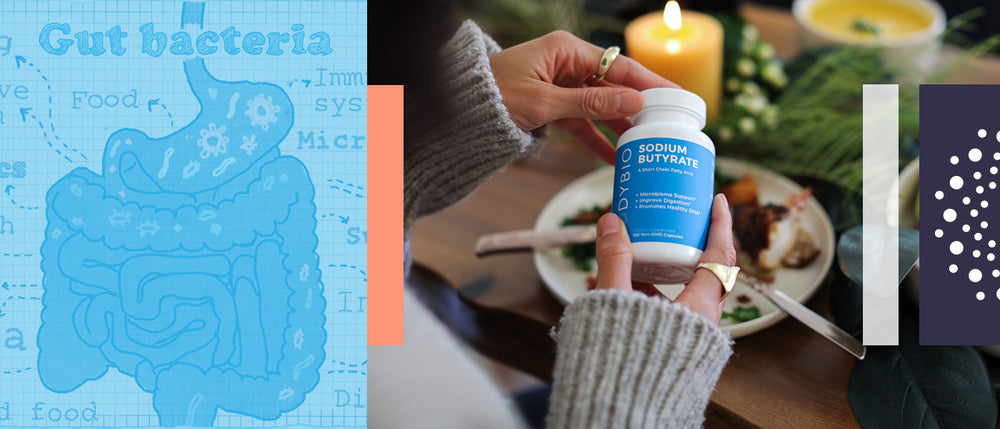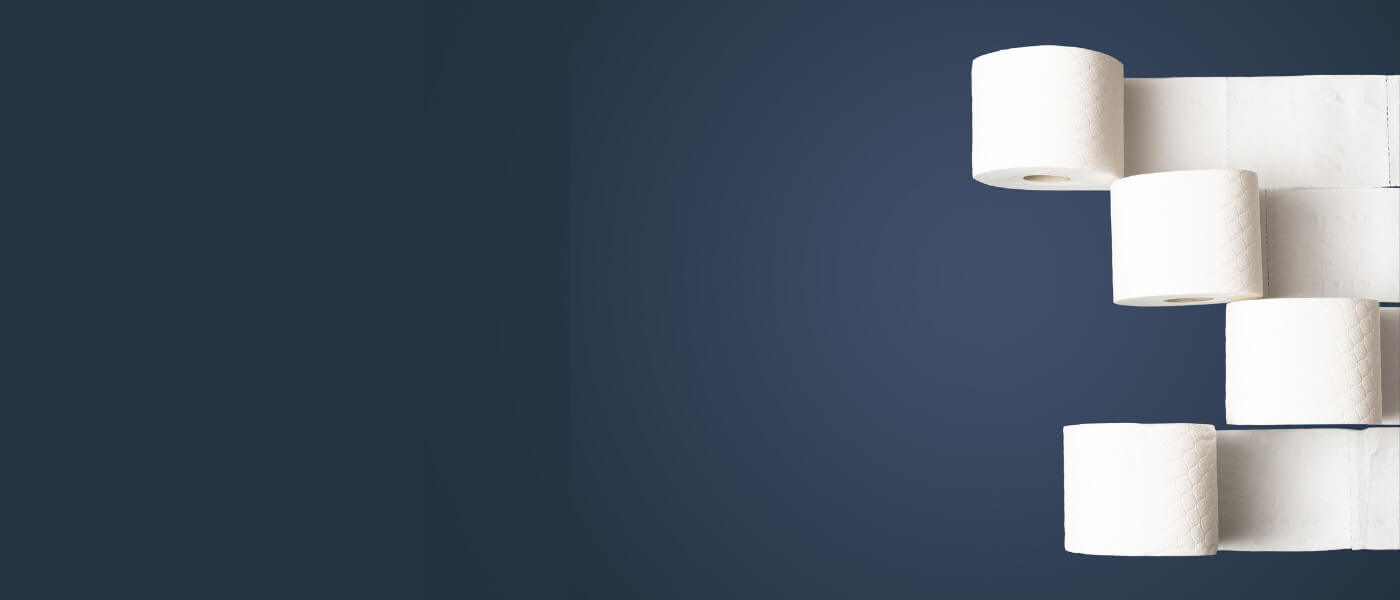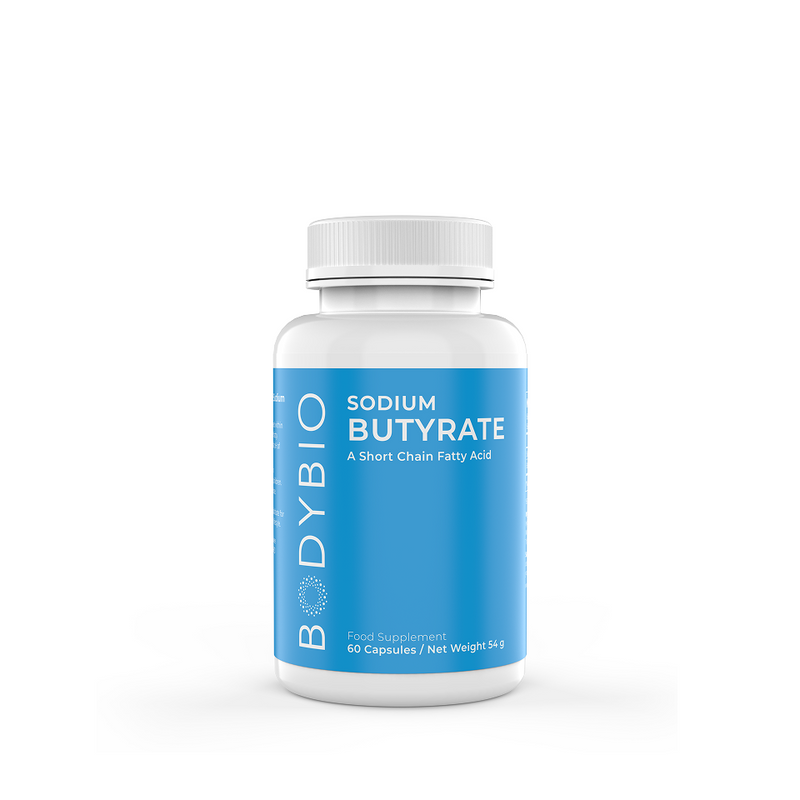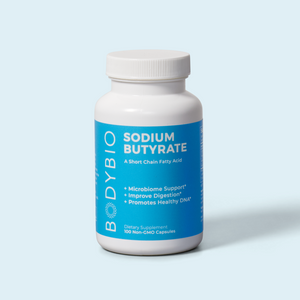The Ultimate Guide to Poop Types: What Does Your Poo Say About You?
Maybe it’s not the most pleasant subject to think about, but you can learn a lot about the state of your health, especially gut health, just by looking at your poop. When expensive stool testing is out of reach, knowing what your poo says about you (in a strictly factual way, of course, we’re not judging anyone here) can help you make changes to improve your health and well-being, beginning with digestion and gut health.
In this article, we’ll give you the ultimate guide on poop, including what’s normal and what isn’t, the handy Bristol Stool Chart, poop colors, shapes, frequency, and more.
Table of Contents:
- What’s Normal?
- What Poop Says About Your Health
- The Bristol Stool Chart
- Poop Color
- Poop Shape and Consistency
- Poop Odor
- How Often Should You Poop?
- How Long Should It Take You to Poop?
- Sink or Float?
- What’s in Your Poop?
- Colon Cleanses: Are They Good for You?
- Talking to Your Doctor
- Perfect Poop Tips
What Does Normal Poop Look Like?
Whether you’re in the habit of checking the toilet after you go #2 or not, you need to know what exactly it is you’re looking for to be able to identify any issues or areas of improvement. A normal poo looks and feels like:
- Brown, snake-like or shaped like a sausage
- Smooth or with some cracks on the surface
- Easy to pass, not much effort required
- Feels complete and satisfying, like everything has emptied.
Basically, you go to the toilet, you do your business without any issues, and nothing stands out to you as strange or different. No funky colors or bits of undigested food or overbearing smells. That’s how you know it’s all good.
What Can Your Poop Say About Your Health?
Looking at your poop and your poop habits can tell you a lot about your health in a more general way. Of course, you won’t be able to identify the specific composition of your microbiome just by looking in the toilet. But there are plenty of high-level pieces of information you can gather that will give you some actionable steps to improve your health, if you need to.
-
Dehydration: An easy way to tell whether you’re drinking enough water is to check your poo. If it looks like hard, round lumps, almost like nuts or large marbles, you’re pretty dehydrated. If it looks like a sausage but it's lumpy, like those marbles were just crammed together, then you’re still dehydrated, but slightly less. Either way, drink up some water and make sure you’re getting enough electrolytes!
-
Malabsorption: Signs of malabsorption, meaning you’re not absorbing
nutrients well from your food, could be loose stools, foul-smelling stools,
greasy stools, pale-colored stools, and seeing bits of undigested food in
your stool. In each of these cases, the malabsorption could have many
different causes, including not producing enough digestive enzymes,
low stomach acid, poor bile flow, a parasite or fungal infection, or even stress. But whatever the cause, it’s critical to address it before other chronic symptoms, like fatigue or mood changes, begin to develop due to a lack of nutrients. If you suspect nutrient malabsorption, it’s important to work with a functional medicine practitioner to figure out the root cause and develop a treatment plan accordingly.
-
Irritable bowel syndrome (IBS): Obviously, one of the first things people who are diagnosed with IBS notice is a change in their poop, usually either more frequent and loose stools (diarrhea or IBS-D) or less frequent and harder stools (constipation or IBS-C). Again, IBS can have many different causes, so it’s important to work with a healthcare provider to discuss your symptoms.
-
Stress: If you usually have normal-looking #2’s, but you suddenly go through a period of high stress and your poo starts looking a little different than usual, that’s a good sign to take a deep breath and reevaluate your stress levels. Have you been running on autopilot and high-stress hormones for a while? Do you feel constantly on edge? When was the last time you really checked in with how you’re feeling? Just asking yourself these questions can help you recalibrate how you’re handling stress and begin to normalize your digestion again.
- Inflammation: If you’re having frequent trips to the bathroom, loose stools, painful cramping, or difficulty with digestion, these are signs that your digestive system may be inflamed. Fatty stools may also indicate inflammation, since that’s a sign that you’re not digesting fats and probably not producing enough digestive enzymes or have poor bile flow, or a combination of these issues.
These are just some general ideas you may be able to deduce about the state of your health by examining your poop. But let’s get into some more specifics.
The Bristol Stool Chart
The Bristol Stool Chart was created by researchers at Bristol University and published in 1997 as a guide for identifying changes in colon transit time. It quickly became useful for gastroenterologists in diagnosing and pinpointing stool consistency in different intestinal illnesses, like ulcerative colitis and Crohn’s disease. The chart provides a simple framework of seven different stool types:

Ideally, you want type 3 or type 4 poops–-these indicate good digestion and nutrient absorption.
Type 1 and type 2 indicate constipation, as we discussed earlier. This could be caused by a few different factors:
-
- You aren’t drinking enough water or aren’t absorbing enough water in your GI tract. This is where it’s important to get adequate electrolytes and minerals through your food and water intake.
- You aren’t getting enough fiber. Fiber is indigestible plant material that helps give stools that ideal snake/sausage shape and makes them easier to pass. However, fiber can also make you constipated, if you consume too much too quickly. If you’re not eating enough fiber, slowly increase your intake of whole fruits, vegetables, and grains like apples, carrots, salad greens, oats, and potatoes, paired with protein and healthy fat during meals, until your digestion improves.
- Your digestive enzymes, stomach acid, and/or bile flow are low. These are the substances that digest your food so that you can absorb what nutrients you need and expel the rest as waste. They also help to stimulate peristalsis, the smooth muscle contractions that move food through the digestive tract. When stomach acid, bile, and enzymes are low, food tends to sit for longer in the gut, causing a backup that becomes constipation.
- You may have a condition known as small intestinal bacterial overgrowth (SIBO). As the name indicates, SIBO occurs when unhealthy bacteria take over the small intestinal tract (where there should normally be little to no bacteria at all), wreaking havoc on the intestinal barrier and causing uncomfortable symptoms.
Over time, the unhealthy bacterial overgrowth may omit a type of gas: hydrogen, methane, or hydrogen sulfide-dominant gasses, depending on the bacteria present. Symptoms of SIBO may vary based on the type of gas omitted. The hallmark sign of methane-dominant SIBO is constipation. Types 4, 5, and 6 are the other end of the spectrum, diarrhea. Sometimes the causes behind these types may be surprisingly similar to constipation, including lack of absorption and insufficient digestive juices. But other common causes include*:
-
Infection or dysbiosis: This could be anything from the stomach flu to fungal overgrowth to a parasitic infection. Hydrogen-dominant SIBO may also be an underlying cause. This type of SIBO is characterized by symptoms of diarrhea, rapid gut motility, gas, bloating, and overall abdominal discomfort. If you suspect a pathogen or dysbiosis, it’s best to work with a functional medicine doctor who can help you identify and treat it.
-
Stress: Know the feeling when you’re about to go on stage, or give a presentation, or compete against your peers, and you’re so nervous that suddenly you have to poop? It’s an extremely common reaction to stress, and after the stressor has passed, your digestion should return to normal. But if you have significant chronic stress, it can definitely trigger loose stools on the regular.
- Food reactions or allergies: As anybody with lactose intolerance knows, eating certain foods that your body is not prepared to digest can cause diarrhea. If you’re not sure what foods might be triggering your digestive issues, trying an elimination diet (like gluten-free or Paleo) for a set amount of time can be helpful, and you can identify any trigger foods as you add them back into your diet later on.
These are not the only causes behind constipation and diarrhea, but they may identify a good place to start making changes in your diet and lifestyle.
Poop Color
Did you know your poop can be nearly every color of the rainbow, depending on what’s going on in your gut (and what you’re eating)? Here’s what you need to know about poop colors.
- Brown: The normal poop color. Stools turn brown because of the bile that breaks down fats during digestion. If you see brown, you’re good to go.
- Green: Green is generally ok too, especially if you’ve recently eaten a massive salad or a green smoothie. But seeing green stools could also indicate the presence of bile, which would normally be broken down during digestion. So you might want to consider slightly increasing your fiber intake to slow digestion and allow that bile to break down fully.
- Red: Red poops can happen after you’ve consumed bright red foods, especially beets, cranberries, and artificially colored red foods. In that case, there’s no need to be alarmed, your poop should return to a normal brown on your next trip to the bathroom. But bright red could also mean bleeding in the lower GI tract, usually from hemorrhoids or ulcers. If you continue to see red in your stools, see a doctor as soon as possible.
- Yellow: Yellow stools are usually caused by fat that hasn’t been broken down, so they may also be greasy and smell bad. There may be a malabsorption issue at play here, including possible celiac disease, so it’s best to see your doctor right away.
- Orange: Most likely you’ll see orange stools after consuming a lot of orange foods, like carrots. This isn’t a cause for alarm, just be mindful that you’re getting a variety of fruits and vegetables in your diet.
- White: White stools mean that you’re not producing enough bile, and there may be a bile duct obstruction. This is cause to see your doctor sooner rather than later. Some medications, like large doses of Pepto-Bismol, may also cause light-colored or white stools.
- Black: Black stools may also result from consuming black or deep purple foods, like black beans. However, it may also result from bleeding in the upper GI tract, including the stomach and small intestine. So if you have black stools and you’re not in the habit of eating black beans every day, see a doctor for an evaluation.
Poop Shape and Consistency
If we look back to the Bristol Stool Chart, types 3 and 4–-the healthy poops–-are sausage or snake-shaped. This is the ideal goal for poop shape and consistency. It indicates that you’re eating the right amount of fiber, staying hydrated, and your microbiome and digestive juices are in good shape with digesting your food.
Straying outside of those two types indicates something is off with your water intake, fiber intake, microbiome, or digestion. See our discussion of types 1 and 2 (constipation) and types 4-6 (diarrhea) above.
How You Can Make Your Poop More Solid
While it’s certainly no fun, it’s usually easier to fix diarrhea, aka loose stools, than constipation. Barring some kind of infection or food sensitivity that’s making you constantly run to the toilet (in which case you should see a doctor), the quickest fix to loose stools is to eat more fiber.
Fiber not only bulks up your stools, but it also feeds the probiotic bacteria in your gut, helping them flourish and proliferate. These good bacteria then create a lot of important nutrients you need, like vitamins, neurotransmitters, and short-chain fatty acids. As the microbiome becomes more balanced, digestion improves, and inflammation calms down.
Why Is My Poop So Big?
If you’ve ever had this question, you’re not alone. Toilet-clogging BM’s can happen to anyone. This might be due to a couple of common reasons.
-
You had a large meal. No surprises here, a large intake of food and water can cause a large stool. No worries, your body is doing what it’s supposed to do.
- You haven’t gone in a few days. You’re backed up, so when it finally does happen… it happens. This is a sign to look into your water and fiber intake to see if you could increase the frequency of your BM’s. We’ll discuss more tips for addressing constipation below.
Poop Odor
Your poop is never going to smell like roses, or the potpourri your grandma keeps in the bathroom. But there’s a difference between the normal odor of poop and a foul-smelling poop. If there’s a serious stench coming from the toilet, that’s a sign of malabsorption, a common issue in gut diseases like inflammatory bowel disease and celiac disease.
Just keep in mind that changes to your food intake, especially an increase in fermented foods or fermentable grains and starches, can easily change the smell of your poop. As long as you feel good eating those foods and you have regular bowel habits, this is just a side effect of increased bacterial fermentation in the gut.
How Often Should You Poop?
This is still a topic of some debate in the world of medicine. If you’re asking a conventional M.D., the standard answer is that anywhere between three times a day and once every three days is normal for how often you should poop. Anything more than that qualifies as diarrhea, and anything less than that is constipation.
However, if you’re only pooping once every three days and eating multiple meals per day, you’re probably still pretty backed up. Even every other day is less than ideal. Most functional medicine doctors will say that once a day is the ideal minimum for a normal BM. Twice or three times a day (once per meal) would be even better, as long as you’re sticking to types 3 and 4 on the Bristol scale.
How Long Should It Take You to Poop?
Between feeling the urge to go and passing a stool, it should really only take a few minutes for the whole process to occur. You might have to push a little bit to get going, but straining on the toilet for several minutes shouldn’t be necessary. If that’s happening to you on a regular basis, you probably already know the issue: constipation.
What Can You Do About Constipation?
So if you are in that once-every-other-day or once-every-three-days range (or longer), what can you do to poop more regularly? Here are a few tips:
- Drink more water (with electrolytes!): We’ve all heard the advice to increase our water intake to prevent constipation, but what if you’re already drinking plenty of water and you’re still jammed up? The trick might be that you’re not getting enough electrolytes, which is what helps water get into your cells. Especially if you drink filtered water (which is a smart choice), adding some electrolytes back in every time you fill up your water bottle is a good idea.
- Add more fiber to your diet (slowly!): Fiber can be helpful for addressing constipation, but adding too much at once will just slow down digestion even more. You may even want to start with something like psyllium husk powder, which when mixed with water turns into a kind of gel that helps bulk up stools and may potentially soothe the lining of the intestines. It’s also a great toxin binder, so any metabolic waste or other toxic compounds you ingest will get absorbed with the stool and excreted out of the body. Just make sure to take it away from medications and supplements.
-
Retrain your vagus nerve: You can think of the vagus nerve as the body’s master control nerve, running from the brain to all of the major organs in the body, including the intestines. Sometimes chronic constipation can occur because the signal from the vagus nerve to the intestines has been interrupted somehow–-by stress, getting stuck in “fight or flight” mode, or living in a state of fear that dysregulates the nervous system.
Exercises that can help reconnect the vagus nerve include deep belly breathing, singing (really!), and yoga. You can also seek out neurofeedback therapy to help retrain the vagus nerve and calm the nervous system. If you’ve tried everything else to fix your constipation and nothing is working, focusing on the vagus nerve and regulating the nervous system may be the key you’re looking for.
- Work with a functional medicine practitioner: Experts trained in functional medicine will often run comprehensive testing such as a microbiome stool test, a SIBO breath test, or a full metabolic panel to help you find the root cause of your constipation. It is possible that a pathogenic overgrowth, methane-dominant SIBO, or poor thyroid function may be contributing to your sluggish bowels.
Should Poop Sink or Float?
You know what happens when you mix oil and water? Right, the oil floats to the top. It’s the same concept with whether your poop sinks or floats. If it floats, it’s because there’s a higher amount of fat in the stool. If it sinks, there’s more fiber.
Floating poops can mean that you’re not digesting fat well, and you might even see grease or oil in the water. That’s a for sure sign that you need to increase your bile production and maybe look into some liver and gallbladder support. Consult with your doctor if fat digestion is a concern for you.
What’s In Your Poop?
It may surprise you (or maybe not, if you’ve made it this far in our explanation), that poop is actually made of 75% water on average. No wonder dehydration is a major cause of constipation. But the other 25% consists of solid material, including undigested plant matter, carbohydrates, protein, fat, and bacterial biomass. This is all normal, but there are a few abnormalities you want to look out for in your stool composition.
Food
It’s not uncommon to see bits of undigested food in your stool, and fortunately it’s not always a cause for immediate concern. There are many vegetables and carbohydrates that are difficult for humans to digest, and especially if you’re in the process of changing your diet to include more fiber. Common foods where this can happen include:
- Tough leafy greens and vegetables like kale, spinach, chard, and carrots, especially raw
- Legumes
- Grains like oats, rice, and corn
- Nuts and seeds.
This can also happen when you’re simply not chewing your food enough or not eating slowly enough. When you only chew your food for a few bites before wolfing it down, it puts more stress on your digestive juices, and eating fast also tells your nervous system that you’re in a state of panic and urgency, which burdens your digestion even more. So chew your food slowly and savor your meals!
Mucus
The walls of your intestines secrete mucus as a protective layer against bacteria and other pathogens. Seeing mucus in your poop is a sign that there could be an infection present in your GI system, especially if the mucus is paired with loose stools, abdominal pain or blood in the stool.
If you’re regularly seeing mucus in your stool, it’s definitely something to follow up on with your doctor.
Are Colon Cleanses Good for You?
Colon cleanses, also known as colon hydrotherapy or simply a colonic, have become a popular fad over the last several years, but they may be more trouble than they’re worth. Colon cleansing involves inserting a tube into the rectum through which purified water streams into and fills the entire colon. This stimulates peristalsis to contract the large intestine and expel waste out through the tube (to be carried away into the sewer system).
Many gallons of water may be filtered through the colon during one session. The idea is to completely clean out built-up stool, bacteria, fungus, and even parasites from the colon, allowing it to heal itself and reestablish a healthy microbiome. But there isn’t much research supporting the effectiveness of colon cleansing, and it comes with risks, from dehydration to bowel perforation.
Besides being difficult, invasive, and potentially dangerous if done incorrectly, colon hydrotherapy is, at best, a temporary solution that doesn’t investigate the root cause of the gut issue at play. No matter the gut health issue—be it potential issues with intestinal permeability (aka leaky gut) to regular discomfort—a colon cleanse will only provide short-term relief.
If you’re wondering how to heal your gut and get relief from symptoms like constipation, gas, bloating, and indigestion, you’re probably better off addressing the foundational aspects of gut health, like establishing a healthy diet, incorporating prebiotic and probiotic foods, and potentially adding in postbiotic therapy, like butyrate.
When Should You Talk to Your Doctor About Your Poop
Your first instinct might be that it’s embarrassing to talk to your doctor about your poop. That may be so, but when you notice significant changes in your poop—including these top 10 signs of an unhealthy gut—it means significant changes in your health, and that should never be pushed under the rug.
If you notice consistent changes in your stool, especially when they are accompanied by other symptoms like abdominal pain, fatigue, difficulty digesting foods, bloating, gas, etc.–-consult your doctor. They can provide guidance and give you next steps on figuring out the root cause of the issue as well as diet and treatment options.
How to Get the Perfect Poop
Alright, let’s wrap up and review with some tips on making your poop perfect.
-
Hydrate: Drink up and make sure you’re getting plenty of electrolytes so that your cells can use that H20. Feel free to change it up with things like green tea, citrus water, and sparkling water so you don’t get bored.
-
Fiber: Eat the rainbow! Eating a variety of plants can bulk up your stool and make it easier to pass; plus, all of that fiber is fuel for your microbiome. Just remember to increase the amount of fiber you consume slowly, or you’ll probably run into issues with constipation. You can also incorporate more resistant starches, the type of fiber that produces butyrate in the gut. Examples of these include cooked and cooled potatoes, beans, plantains, oats, and rice.
-
Promotility agents: If your diet is good but motility is still on the slow side and you need to get things moving a little more regularly, you can try some promotility agents like aloe (juice or capsules), triphala (a combination of three ayurvedic herbs), or peppermint, among others.
-
Toxin binders: If your motility is on the fast side, toxin binders may help to slow it down and grab up harmful toxins in the process. In general, fiber serves as a basic toxin binder, but there are more targeted options available too. Some of these include activated charcoal (just make sure to take it a couple hours away from other medications and supplements), psyllium husk powder, and chlorella. Speak with your doctor about using these binders before you begin.
-
Probiotics: Probiotics can definitely be helpful for reaching the perfect poop. Just make sure you find a high-quality option that matches your individual needs.
-
Healthy fats: Increasing your healthy fat intake may help improve your digestion and help things run more smoothly. But again, if your digestion is already too fast, adding in more fats might make things worse, so go slow and see how you feel. Adding fats like MCT oil and olive oil are easier for the body to digest and use as quick fuel.
-
Digestive aids: Sometimes, we just need a little help on the digestive front end. Try taking betaine HCl (stomach acid) and digestive enzymes with your meals, and see if that improves your digestion and the quality of your stools.
-
Reduce Stress: We know, this is easier said than done sometimes. But stress really does have a significant impact on your gut health, just as much as your diet and nutrition. Whether it’s developing a relaxing morning routine that makes it easier for you to go at the same time each day, or savoring your food to encourage better digestion, consistently lowering stress levels can help you achieve the perfect #2.
- Supplements: Supplements like BodyBio’s Butyrate can support your gut health along with following best practices for diet, lifestyle, and stress management.
Put the Flow Back in Your Go with BodyBio
It might not be pretty, but the state of your poop is a powerful diagnostic indicator of your overall health. As is often said in functional and integrative medicine, health (and disease) begins in the gut. If you can get to the bottom of your gut issues, odds are your whole body's well-being will improve along with it.
BodyBio is committed to making people healthier, one cell at a time—including the cells in your colon. As part of that mission, we provide a wide array of supplements for gut health, including Butyrate.
- Butyrate is a key postbiotic that provides fuel for the cells of the gut lining. Butyrate benefits include maintaining a healthy microbiome, supporting immunity, and enhancing mental clarity.*
Whether you’re on an epic quest to get your poo back on track or you suspect that what’s happening in your gut is impairing your energy, focus, and mood, we hope this guide to types of poops has given you a few potential solutions, or at least some peace of mind.
Visit our Butyrate page to learn more about BodyBio’s cutting-edge supplement for gut health.











